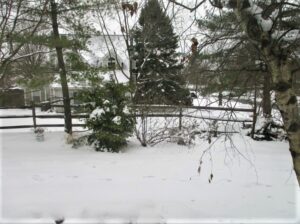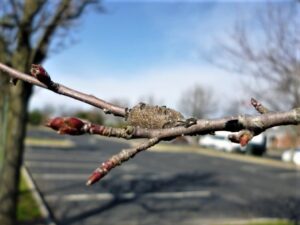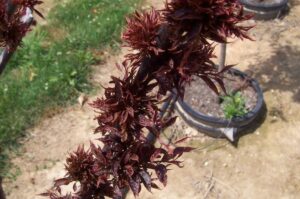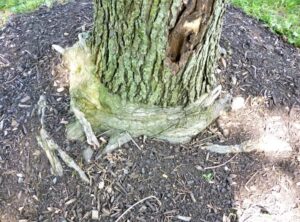WITCHES’ BROOMS: The development of witches’ brooms on woody plants and the resulting formation of abnormal growth can cause curiosity and concern to your clients. Typically, the new growth is distorted, and a proliferation of leaves or fruit/cones closely clumped together appears when apical dominance is lost. Witches’ Brooms are created on plants when the transfer of growth hormones is disrupted (perhaps caused from the introduction of a foreign substance). Insects (e.g., aphids), fungi, bacteria, viruses, phytoplasmas, and herbicides have all been implicated in causing the formation of witches’ brooms in many plant species.
Landscape IPM Scouting Techniques: Basic Overview
KEY PLANTS vs. KEY PESTS vs. KEY LOCATIONS CONCEPT:
Landscape IPM (Integrated Pest Management) methods require site-specific information. Every landscape typically contains at least several key pests, key plants and key locations that will be unique to each site. These concepts are extremely useful to simplify monitoring procedures at any given landscape. They will enable field technicians to concentrate on plants and locations that are prone to problems as well as those plants and locations that have low aesthetic thresholds. Scouting efficiency should improve and a more productive use of time spent on landscapes is the result. It is important to emphasize that Integrated Pest Management is a philosophy & practitioners will need to develop skills & experience to improve their levels of commitment.
New Jersey Department of Agriculture Moves to New Building in Trenton
The New Jersey Department of Agiculture Administration and Staff have moved from their previous office building to a new location.
In the event anyone needs to drop off samples for testing or visit the NJDA for any reason, please be advised of this change of location.
The new building address for the NJDA office is: 200 Riverview Plaza, 3rd Floor, Trenton, NJ, 08611
The mailing address remains: PO Box 330, Trenton, NJ, 08625
For more information see the NJDA website.
Winter Landscaping Considerations
What Effect Will a Cold Winter Have on Insect Populations This Season?: Insects overwinter in all life stages, but the majority are in the egg or pupa stage. Cold weather usually has little effect on these stages. Those that overwinter as adults or larvae usually overwinter in protected locations. Snow cover can insulate insects and increase survival. The major cause of decreasing insect numbers is widely fluctuating temperature extremes throughout the winter. When temperatures warm, insects begin development, only to stop when temperatures again drop. Therefore, springs with false “starts” are more likely to negatively affect insect populations than a steady cold winter.

Snow cover can insulate insects & increase winter survival rates. (Photo Credit: Steven K. Rettke, Rutgers Coop. Ext.)

Springs with “false starts” can be detrimental to early hatching Eastern Tent Caterpillars. (Photo Credit: Steven K. Rettke, Rutgers Coop. Ext.)
Plant Health Care (PHC) Concerns in the Landscape
Girdling Roots:
Many tree species can develop potentially life-threatening girdling roots, but maple species are notorious for developing them in the landscape. As offending girdling roots expand in diameter and press against the also expanding central stem, an inevitable slow decline of the tree begins. When two roots grow together or when two branches grow together, then they can graft and share conducting tissues. However, root and stem tissues cannot graft together, and detrimental effects occur when they expand into one another.
Winter Pest Monitoring in the Landscape
During the winter dormant season, there are a significant number of potential pests of ornamentals that require monitoring. Pest populations ignored during the off season is a missed opportunity to evaluate future problems. These potential concerns can be especially pronounced on evergreen shrubs and conifers. Therefore, this winter do not make the mistake of thinking that landscape problems can be forgotten about until next spring. A little vigilance now can go a long way toward recording & possibly reducing future problems. The following is a review of some of the major pest problems that require monitoring and possible management actions during the next few months.







